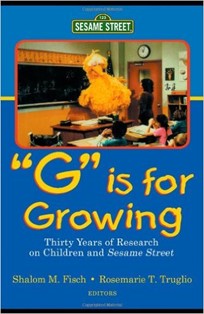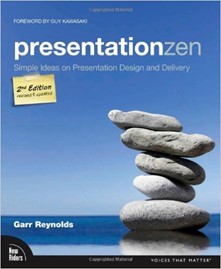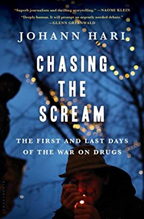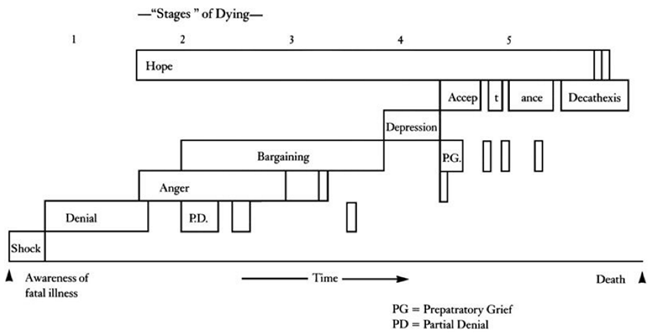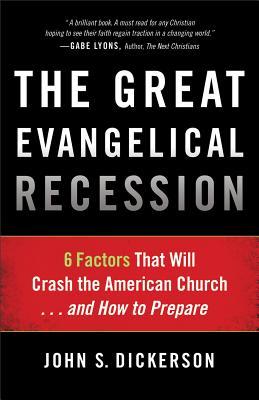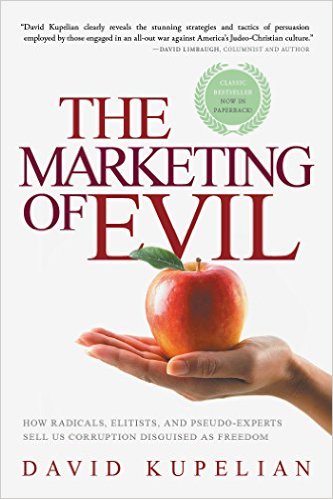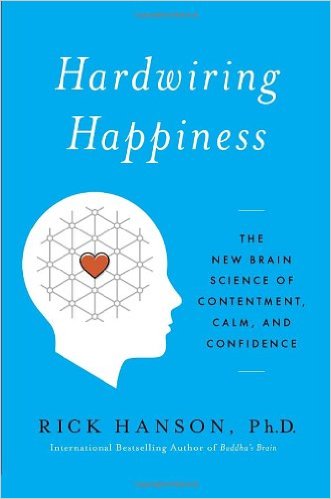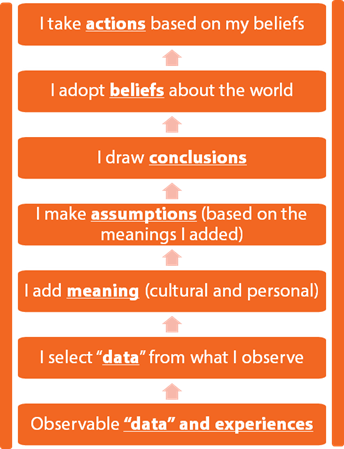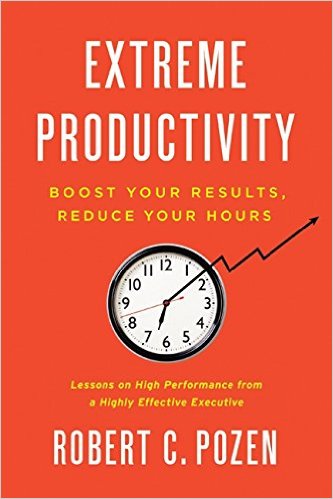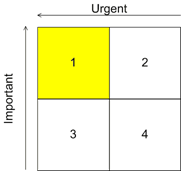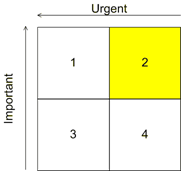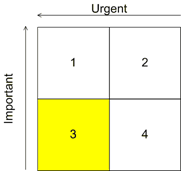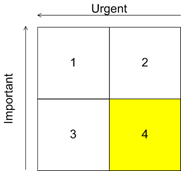Robert Bogue
July 27, 2015
No Comments
I was drawn to Chasing the Scream: The First and the Last Days of the War on Drugs through an article that I was forwarded. The article spoke about alcoholism and criticized the efficacy of Alcoholics Anonymous which I had seen be very successful for various dear friends of mine. I didn’t agree with the conclusions the articles made but I was also intrigued because it seemed like the stories that the article used were real and true. It seemed like there were some darker sides to recovery ministries and 12 step programs. I wanted to know more. I got a little more than I bargained for.
Curious Questions
When you’re struggling with someone that you care about who has become addicted to some substance there are hundreds of questions that rattle through your brain. Why them? What about them makes it so they are addicted to the substance or behavior when so many other people get along just fine? After all, we’re a nation of alcohol. We’ve got beer commercials. Sonoma and Napa counties in California are bursting with wineries. Even in the Midwest wineries aren’t far away from me. It seems like nearly everyone drinks alcohol so what makes it so that some people have to have it?
I remember a friend’s mom always with a tumbler in hand when I’d visit. They had hard liquor sitting out on the buffet and she’d take a drink casually as I was there. Growing up I didn’t think anything of it. Through conversations with my friend and later reflection, I realized that she was a functioning alcoholic and had been for some time. A functioning alcoholic is addicted to alcohol but they manage their addiction such that they don’t lose their job. They don’t crash their car. They don’t do anything that you expect from a typical alcoholic.
This just raises new questions. So even of those who are addicted to alcohol there are some who manage to keep the threads of their life together and there are some who are unable to keep things from unraveling, how is that? What could be done to help more people not get addicted – and for those that can’t avoid addiction how can they be helped to maintain some semblance of a life?
Bubbling Pains
I had learned through some recovery programs and research that addictions are really the bubbling up of pains that we had developed through our experiences. I learned that if you could find a way to heal the pains that the addictions would go away – perhaps not completely but certainly substantially. What I didn’t know, however, was that the nature of addiction as I knew it was a lie. It was a convincing lie but a lie none the less.
While I was growing up my mother smoked. I always wanted her to quit. However, it wasn’t until after I left the house that she was able to kick the habit with the help of nicotine gum. What I learned from Chasing the Scream was that my mom was one of the roughly 17% of people who are able to quit smoking based on nicotine gum. I had to let that sink in a bit. Only 17% of the folks that were addicted to smoking – reportedly addicted to the nicotine in cigarettes – could stop when given a much safer way to get the nicotine they were reportedly addicted to.
So the chemical dependency theory – the theory that people are literally chemically addicted to the substance could only account for 17% of the cases. This was confusing to me because I had been told that it was the chemical addiction that drove addiction – nearly exclusively. Having statistics in hand – what I had already learned about addiction not being about the substance but rather about the person started to make more sense.
More pieces fit into place. Why do people who quit smoking gain weight? It was an excuse used by some folks to not stop smoking for fear they’d gain weight and not gain ground on being healthier. If you understand that the addiction causes – the pain of childhood – are still present even if you remove the chemical, it makes sense that addictions are just traded for more socially acceptable ones when pressure is applied. We can stop smoking or drinking if we receive enough pressure – but we do so by indulging another more socially acceptable addiction like eating.
It’s no secret that America is overweight. We’ve got a love affair with food that we just can’t get away from. Perhaps this is because our parents rewarded and soothed us with foods like ice cream but perhaps it’s something more. Perhaps it’s because we use food to feel better about ourselves.
Escaping Reality
For most addicts the addiction serves to create an escape mechanism. Outside of the addiction they feel the pain – or pains – in their world. Inside the addiction the pain is hidden – at least for a little while. It’s possible to feel OK or even good about oneself in the altered state of reality in the addiction. Whether it’s the mind altering effects of alcohol and drugs or the mild euphoria of a good meal or a sexual encounter, the addiction creates an opportunity to escape the pain. The only real problem is that most addictions cause further pain in one’s life.
Alcoholics have hangovers. Drug addicts have withdraw symptoms. Overeaters have to face the scale. Shopaholics have to tackle their credit card bills and mounting debts. Sexual addicts have to face the risk of disease. So the deeper and more pronounced the pain the greater the need for the escape – and the greater the negative impacts are felt. Escaping reality only works for short periods of time.
Did Prohibition Work?
While neither advocating nor resisting the idea of legalizing drugs – having myself never partaken of illegal drugs – I became curious about how effective it was to tell a society that their escapes would no longer be legal. In the United States we have a perfect experiment on what happens when you take something that was legal – alcohol – and make it illegal. Our attempts to restrict alcohol is perhaps one of the most dismal failures in our nation’s history. Never before had we created a constitutional amendment to do something and then just years later completely reverse and repeal what we had worked so hard to get amended. We learned so painfully that the experiment didn’t work – and yet we were doomed to repeat it.
It turned out that during prohibition alcohol didn’t really stop flowing – it just moved underground into speakeasies. It became relatively well known that it was happening and relatively out of the hands of the police. It built the empires of gangsters like Al Capone who were able to make large sums of money on alcohol as they could charge a premium for it because it was so risky. Capone and his contemporaries increased the violence in the streets of Chicago and elsewhere as they competed for the lucrative and hidden business of alcohol distribution. So the prohibition of alcohol quite directly created the violence and gangs and power in the underworld because people wanted their escape – whether it was legal or not.
An unintended side effect of prohibition was that alcohol got harder. Instead of wine and beer patrons switched over to harder stuff. They switched because if you’re doing something illegal you want to get the most bang for your buck. To do that you needed to sell harder stuff. When all you had was hard liquor then people would buy it. As a result many of the folks who were consuming drinks that were 3-6% alcohol by volume switched to stronger stuff – along the lines of 50-75% alcohol by volume. That’s an unintended consequence. (You can learn more about unintended consequences in my review of Diffusion of Innovations.)
The other challenge that was created by prohibition was that the cost of alcohol soared. Because the risks associated with producing, transporting, and selling alcohol the costs were substantially higher. While this fueled the empires of folks like Al Capone is crushed families where someone had an addiction to alcohol and still felt like they needed it. The money that drove the system came from the hurt people who were trying to escape their pains. Ultimately they ended up creating more pains based on the financial challenges that were being created.
In the end, we know what the impacts of prohibition were but we can’t say if it made a real and measurable impact on alcohol consumption – but we can say that it didn’t have a long term effect because alcohol consumption rates after the repeal of prohibition gradually returned to the same rates as the pre-prohibition era. However, the real goal of prohibition wasn’t stopping the flow of alcohol. The real goal was the reduction of human suffering caused by alcohol. We wanted to free the addicts and prevent the side-effect problems caused by excessive alcohol consumption. On this measure we’re relatively certain that we didn’t achieve the goal, we in fact created more suffering related to alcohol than we had ever stopped.
Changing Strength
What if every time you put gas in your car you had no idea whether it would get you two miles or two thousand? How would you plan your trip if you never knew how far it would go? This is the problem faced by drug addicts every day. It’s impossible to know whether the drugs that they’re doing are pure – or how pure they are. Did they buy something that was mixed (cut) with something harmful to them or was it pure? Pure drugs would seem ideal – but not if you’re used to watered down versions and you accidentally give yourself too much. What about the “additives” that are mixed in to reduce the effectiveness while maintaining the same volume? What was to prevent someone from mixing in rat poison? While this seems like perhaps an odd idea, there are stories on the news everyday of people doing unlicensed cosmetic procedures with chemicals which kill people.
It’s commonly understood that the industrial revolution was driven by steam power – and that’s partially true. However, the big deal is standardization. Instead of nails and screws being whatever the person making them could do it was possible to introduce standards. You could have a quarter inch bold with 20 threads per inch. This standardization made it possible to have interchangeable parts and there by dramatically reduced the challenges with fixing problems when they arose.
The standardization of dosages has a similar effect. If you know what to expect you can plan for it. Without that standardization it’s so easy to misdose a drug – and to overdose.
Enforcement
Have you heard the stories of women getting out of speeding tickets either by batting their eyelashes or by crying? It’s an urban legend – true or not – that women can get out of speeding tickets by either flirting or by crying. This creates the idea of selective enforcement. In a utopian world everyone who was speeding would be treated the same way. However, as this urban legend points out that may not be the case.
Similarly the situation with drugs is that while the usage maybe uniform across the entirety of society there is selective enforcement around minorities and the poor. Chasing the Scream makes some compelling arguments that this has always been the case in the war on drugs. We’ve always more aggressively targeted minorities for enforcement because they’re the least likely to fight back.
Creating an Addict
If you’re trying to figure out why some people become addicted it may seem odd that you’d ask how to create an addict – however, if you’ve seen people slip into an addiction it’s hard to avoid the awareness of how an addict is created.
Above we discussed the bubbling pains that are the root from which addiction springs. How would you create those pains in the first place? Because if you create the pains that lead to addiction – you in essence have found the way to create an addict. I’ve seen this story play out – quite accidentally – several times.
To understand how to do this one has to understand the nature of shame and guilt. Perhaps the best resource for understanding shame and guilt is Dr. Brene Brown. In her book Daring Greatly she discusses the differences between shame and guilt – and how they impact us.
Shame is about feeling bad about who we are. That is – we are bad. Guilt is the related cousin to shame. Guilt is that we feel like we have done something wrong. If you can create guilt or better yet shame then you have the ability to fuel the forces that create an addict. So how do you go about doing that?
Well, you could make drugs illegal so that using them was a crime. You could send the message to society that drug users are somehow less human – they’re defective and broken. (Though my review didn’t highlight the coverage being less human Emotional Awareness discusses the impact of making others less human.) You can reinforce the message that well-adjusted people don’t need drugs so that only those who were not able to cope used drugs.
It seems to me that these are exactly the messages that were and are being used to “fight the war on drugs.” Ultimately if someone is sent to prison it’s not just their possessions that are left at the front door – it’s their humanity. What could be more demoralizing?
Most Addictive Substances
If you were to pick the worst drug – the one that causes more misery and more pain than any other drug – what would it be? Would it be meth as it rots the teeth and bodies of its users? Maybe it’s heroine and the deaths caused by overdose? Does pot make the list because of its tendency to mellow out the user there by robbing them of desire to do things?
As it turns out when the research is done for the most addictive drug and the one that causes the most pain the winner isn’t any of the hard drugs that we were told cook our brains. The winner is alcohol – the drug that we tried to make illegal and the experiment failed so miserably that we had to repeal a constitutional amendment.
Rat Park
Do you remember the old public service announcements “This is your brain. This is your brain on drugs” campaign? It was widely used and effective at scaring parents and teenagers alike about the impact of drugs – never mind the fact that both parties were in large numbers over consuming the most dangerous drug – alcohol. At the time of this campaign there was also one that showed rats in a cage killing themselves by over consuming drug laced water. It spoke of the only substance that rats would overconsume to the point of death.
The problem is that this was based on research where the rats were placed in solitary confinement with not a thing to do. The rats didn’t have a reason to live. Ok, perhaps rats don’t think about such existential things – but maybe they do. It turns out if you rerun the experiment with toys and other rats – they don’t over indulge in drug laced water. Instead the rats experiment with it and then decide to drink the regular water.
Over and over again with different animals we see behaviors where the animals use drugs to cope with pain. We see that if you have a good environment there won’t be any drug use but if a mate should die or there’s no reason to continue – the animals will remain in a stupor or will drug themselves to death.
The Start of the War
It’s hard to build an empire when the shores of that empire keep eroding away. Henry Anslinger was appointed to a position in the prohibition department as alcohol prohibition was being repealed. Talk about eroding sands. So what’s a guy to do when the base you’re standing on is eroding? Jump to another island or in this case, create another island.
As it turns out the drugs that are so evil now are drugs that we’ve had available for a long time. Coke’s original recipe included cocaine – and it was legal. However, one can hardly build an empire on controlling the use of substances if they’re freely available. As a result, Henry Anslinger set about on an unrelenting campaign to create the perception that drugs were evil.
It turns out that the public was an easy mark in this situation. The public wanted to believe that their children – who were experimenting with drugs – were fine, healthy young adults without any scars from their upbringing. They wanted to believe that the drugs themselves were to blame for the addiction and pain. They didn’t want to accept that for drugs to be addictive there has to be an underlying pain.
So when Anslinger sold them on the idea that their poor children had no choice, the drugs were too powerful for them to resist – and that they had to protect their children from them, parents were all too eager to accept this perspective.
There was, of course, the need for the standard propaganda. There was the need to suppress dissenting opinions and ensure that the only message that was making it out was that drugs are evil. However, this is no different than the propaganda about the views of the Nazi party as Hitler rose to power.
The Fear of Them
Of course there was more to the propaganda than just parents wanting to believe that they weren’t to blame for their children’s drug addictions. There was also the need to quell the fears that some other racial group would rise up and overthrow the power system in place. Blacks, Mexicans, and Asians were all feared. They were all threats to white supremacy and rule.
Stories weren’t created about how drugs created super-human beings which not even a bullet could stop. The stories – like good comedy (See I am a comedian.)– had their root in reality. There were drugged people who were committing crimes and doing seemingly impossible things after being mortally wounded by a bullet. The stories were real but the causes for the unnatural ability to continue after being shot weren’t necessarily because of the use of drugs. While it’s not clear what the causes were, it’s clear that the stories were retold and spun in such a way to increase fear about minorities who were using drugs and being violent.
The propaganda was designed to vilify and isolate those nasty minority drug users from the high moral white folk whose children were at risk.
Turf Wars
In most situations when you increase enforcement of laws the target of that enforcement goes down. If you focus on speeding the number of folks speeding goes down. However, if you focus on drug dealers – the amount of drug dealing doesn’t go down. Why? To answer that we have to understand and accept economics. Economics isn’t the study of money. It’s the study of how people behave with regard to money.
We believe in the law of supply and demand. The more demand and the smaller the supply the higher the costs. This law is in operation for drugs. We’re not changing the demand for drugs with increased enforcement we’re changing the supply – the demand remains constant (or relatively constant.) When the supply is temporarily cut someone else jumps in to fill the void.
The same system of supply and demand that during prohibition created Al Capone created and continues to create dealers today. As the dealers fight for more control their turf wars are the battle.
The End of the War
Today we’re seeing more relaxed attitudes about illegal drugs – states are making it easier to get marijuana. In some cases it’s legal for medical reasons. In other states it’s just legal all together. While as a nation we’ve not begun to repeal our drug laws the tide is definitely turning towards the legalization of more drugs than we’ve seen in decades.
At some point there needs to be an end to the unnecessary suffering that is being caused by the very laws that were designed to protect us from drugs. There will come a time when we’ll stop Chasing the Scream.
